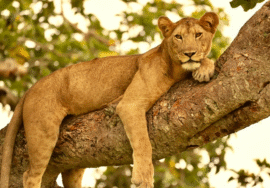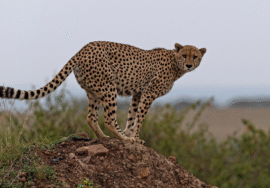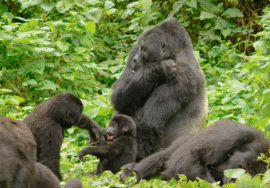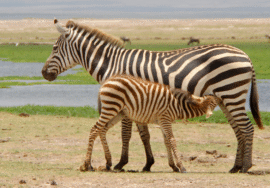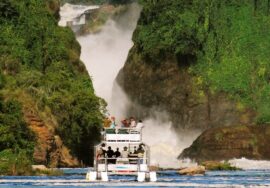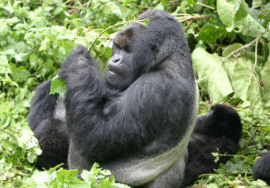Samburu National Reserve
Samburu National Reserve
Located in the north of Mount Kenya in a more arid part of Kenya, the three national reserves of Samburu, Shaba, and Buffalo Springs all border each other and are often regarded as the same protected area. The area includes woodland, a large amount of bushland, and grassland home to many different African icons whereas rivers are then home to hippos and crocodiles. There are around 400 different birds to find in the area making it a great place for birders Samburu national reserve basically covers an area of about 165 square kilometers and about 350km from Kenya’s city capital Nairobi. The reserve is a paradise for elephants and predators like lions, cheetah, Oryx, wild dogs, leopards, hyenas among others, a home for over 450 recorded bird species, with unique landscapes and cultural heritage. On addition, the reserve is blessed with its unique features such as the Uaso Nyiro River, doum palm forest, Koitogo hill and finally Samburu cultural center. Therefore, with these diverse habitats and spectacular scenery, Samburu national reserve offers to visitor’s unforgettable safari experience for a life time.
Activities in Samburu National Reserve
Game drives
Generally, this interesting activity offers a breathtaking experience amidst stunning landscapes and diverse wildlife. The Park is a haven to variety of wildlife including the large predators namely; leopards, lions, cheetahs, different mammal species such as elephants, zebra, Oryx, greater and lesser kudu, buffalos, wild dogs, hyenas, reticulated giraffes, jackals, antelopes, among others. Over 450 bird species such as storks, hornbills, eagles, vultures and much more.
Birding experience
Samburu national reserve is a birdwatcher’s paradise with over 450 bird species. The reserve has variety of key birding areas i.e Uaso Nyiro river, doum palm forest, Samburu grasslands, and Koitogo hill. Target species include; eagles, vultures, weavers, turacos, hornbills, marabou storks, golden winged sunbirds, Somali bee-eater, Somali ostrich, spotted palm-thrush, secretary bird among others. Endeavor to carry your binoculars for a better experience and whether you’re an experienced birder or just a starter, there’s always something for everyone in this stunning reserve.
Cultural Encounter
While here, experience the rich cultural heritage of the Samburu people, a semi nomadic tribe living in harmony with nature. Originally, the Samburu people have been inhabitants of the area presently known as the Samburu National Reserve, grazing their animals in the savannah plains of the reserve. Whilst here, tourists get a chance to learn more about traditional ways of life, customs, beliefs, witness vibrant performances of traditional Samburu dance, see artisans create beautiful beadwork, wood carvings and pottery, listen to elders share tales of Samburu history and mythology, share meals with locals among others. However, it’s advisable to be mindful of photography therefore ask permission before taking pictures.
When to Visit Samburu National Reserve
Safaris in Samburu National Reserve are done all year round and the best time to visit the reserve depends on your preferences and what you want to experience. However, the dry seasons of July-October for easier wildlife spotting due to dry vegetation and wet seasons of November-May for newborn animals, scenic landscapes are highly recommended.
How to get to the park
By road; Samburu national reserve can be easily accessed from Nairobi the major city of Kenya which takes approximately 5-6 hours.
By Air; Charter flights from Nairobi Wilson airport and Moi airport in Mombasa can fly you to the reserve in less than 1 hour

